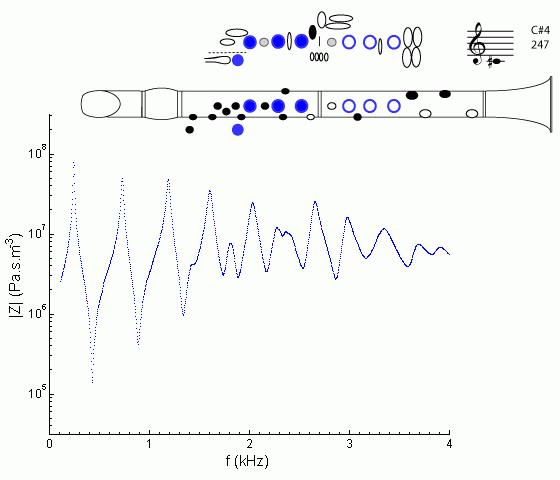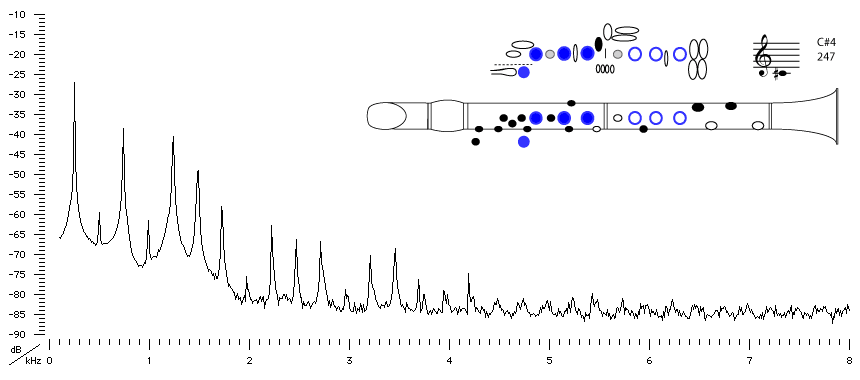| Acoustics of the clarinet |
Bb clarinet |
C#4 |

|
Fingering Acoustic schematic Non-specialist introduction
to acoustic impedance Notes are the written pitch. |
Globally, this impedance spectrum is much like that for C4. One more hole has been opened, thus the fundamental frequency has risen 5.9% (a semitone). The next three peaks have also risen by almost the same proportion and support the 3rd, 5th and 7th harmonics. Note, however, that above about 2 kHz (ie well above the cut-off frequency for the clarinet), the curves for C4 and C#4 and other nearby notes are all nearly the same: not frequency shifted. This is because at high frequencies, the air in the fingerholes doesn't have much time to move far, and the sound waves propagate down the bore, almost without 'noticing' the open holes.
For general comments about the chalumeau register, see E3.

Sound spectrum
of a Bb clarinet
played using fingering for C#4.
For more explanation, see
Introduction to clarinet acoustics
|
Contact:
Joe Wolfe
/ J.Wolfe@unsw.edu.au |